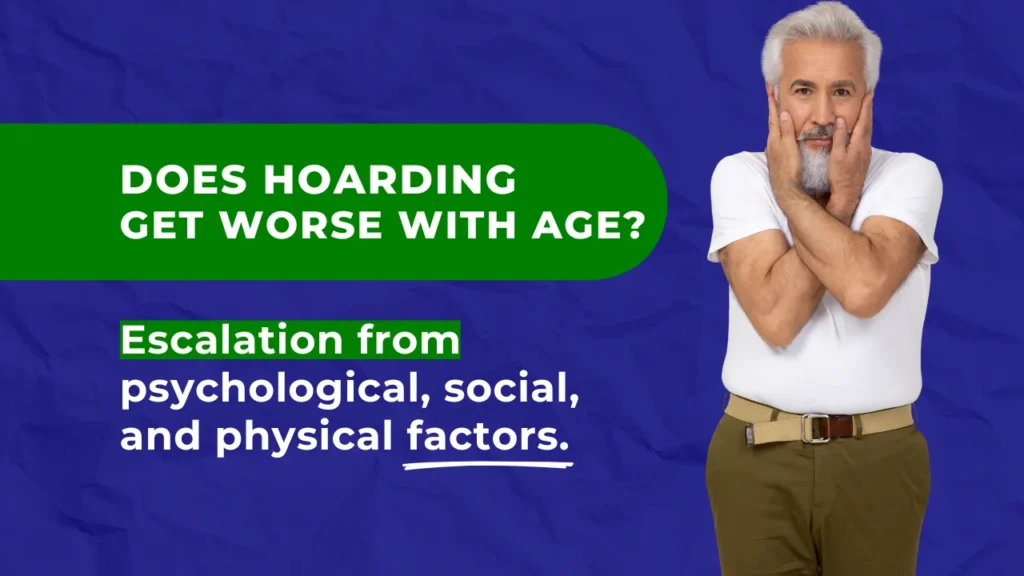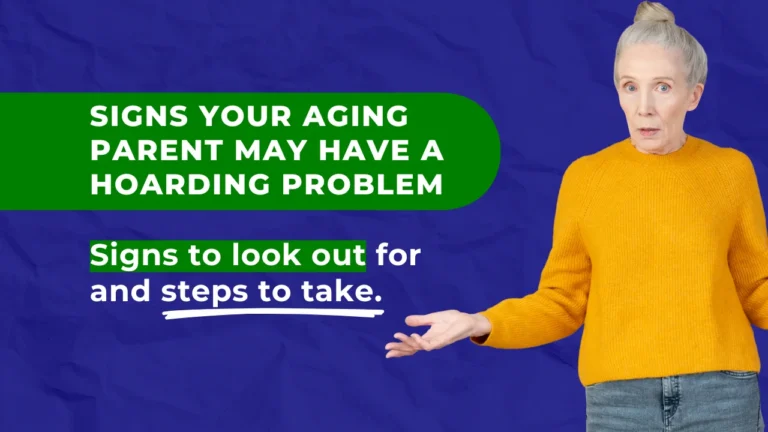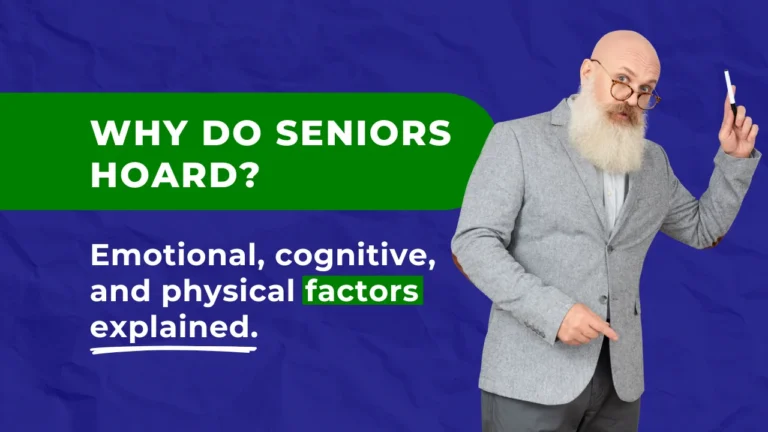If you’ve watched Hoarders, you may have noticed that many of the affected parties are middle aged or older. Each episode features them arguing with and actively resisting their adult children, siblings, close friends, and other family members. This median age group may have you wondering whether hoarders really do get worse with age.
The short answer is yes; hoarding can and often does become more severe as people grow older. The reasons behind this escalation are varied and include psychological, social, and physical factors.
We provide hoarding cleaning services in Hamilton and can say, without a doubt, that hoarding worsens over time, and the elderly population is at higher risk.
In this blog, we’ll go over why hoarding tends to worsen over time, how aging influences this condition, and what you can do if you or someone you know is dealing with hoarding as they age.
Why Hoarding Worsens With Age
Hoarding affects about 6% of the population in the Canada, translating to roughly 2.4 million people. The disorder is often linked to anxiety, depression, and other mental health conditions. For some, hoarding begins in childhood or adolescence, but it usually becomes more noticeable in adulthood. As people age, the tendency to hoard can intensify, leading to more severe consequences.
Several factors contribute to why hoarding tends to worsen with age. These factors are often intertwined, making it difficult to address hoarding without considering the broader context of a person’s life.
Accumulation Over Time
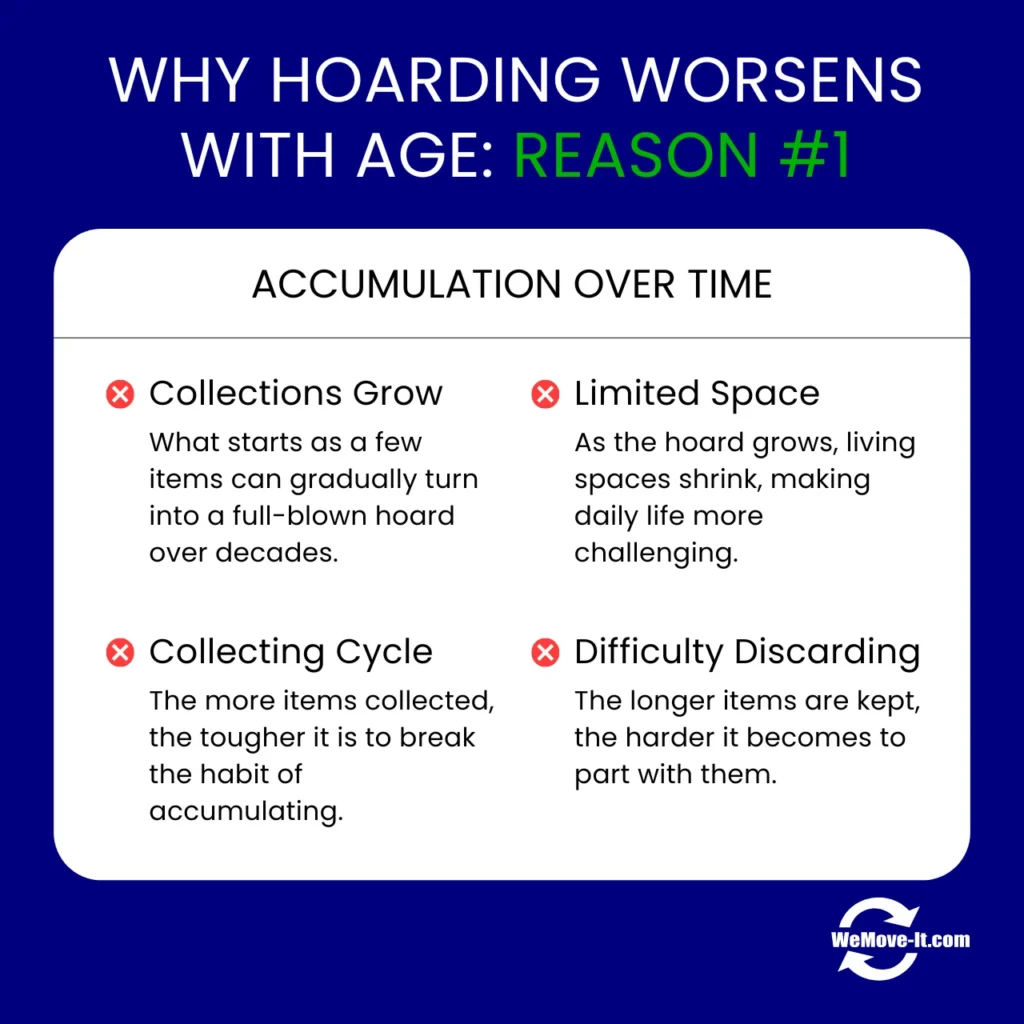
A major reason why hoarding worsens with age is the sheer accumulation of items. What might start as a few boxes of things can, over decades, turn into rooms filled with possessions. As people continue to acquire items without discarding anything, their living spaces become increasingly cluttered. The longer hoarding goes on, the more difficult it becomes to manage, leading to a cycle of accumulation that is hard to break.
Physical Limitations
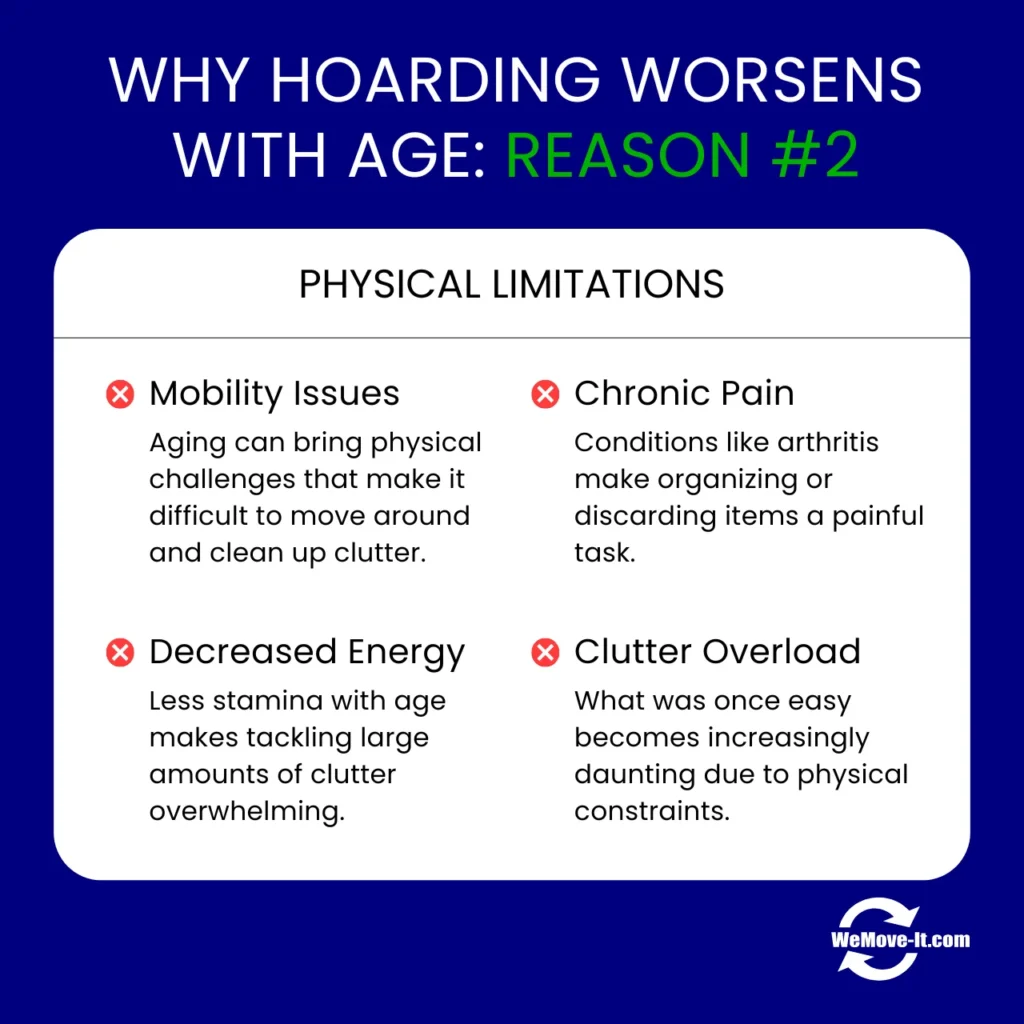
As people age, physical limitations can make it harder to manage clutter. Mobility issues, chronic pain, or conditions like arthritis can make it difficult to clean, organize, or even move around the home. What might have been manageable clutter in younger years can become overwhelming as these physical limitations set in. The energy required to tackle hoarding also decreases with age, leading to further accumulation.
Cognitive Decline
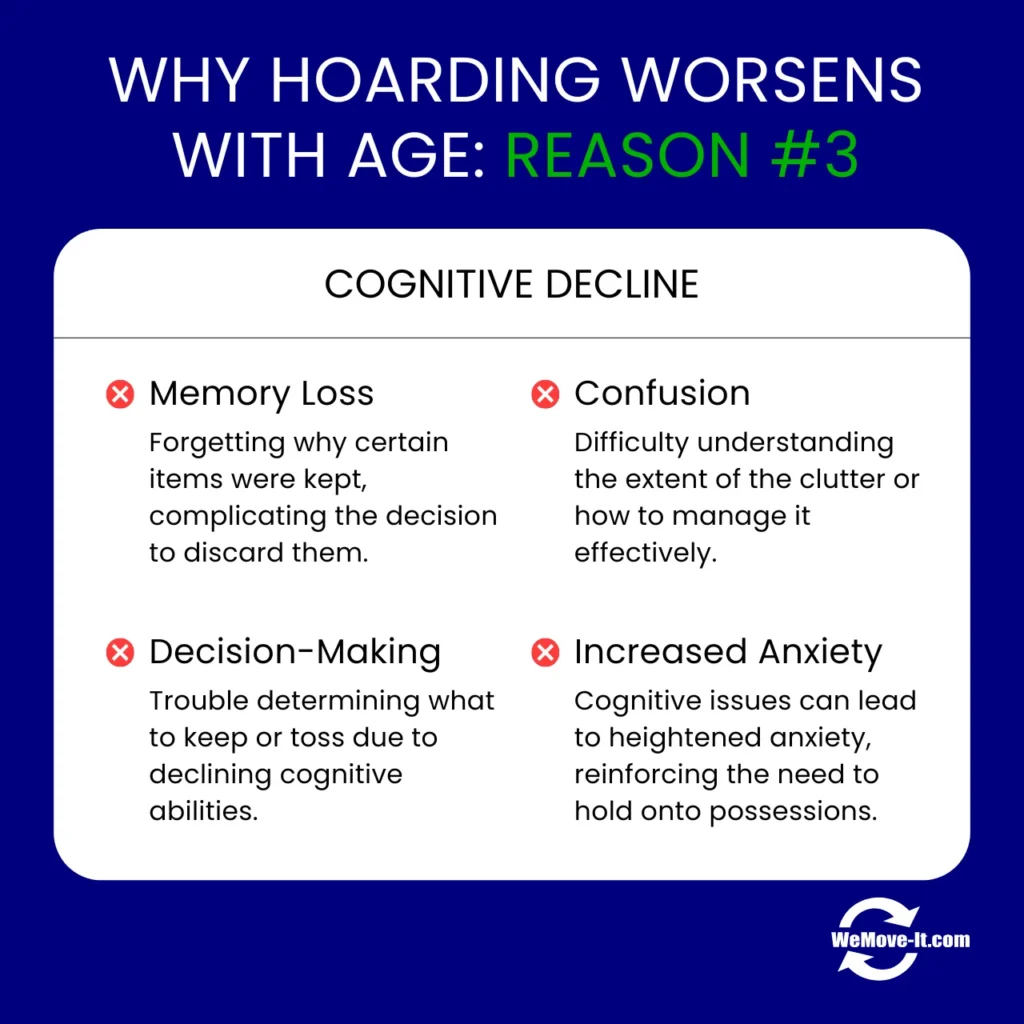
Cognitive decline, which can include memory loss, confusion, and difficulty making decisions, is another factor that contributes to worsening hoarding behavior in older adults. As cognitive abilities decline, individuals may struggle to recognize the extent of their hoarding problem or make rational decisions about what to keep and what to discard. Cognitive decline can also lead to increased anxiety, which can, in turn, exacerbate hoarding tendencies.
Emotional Attachment and Loss
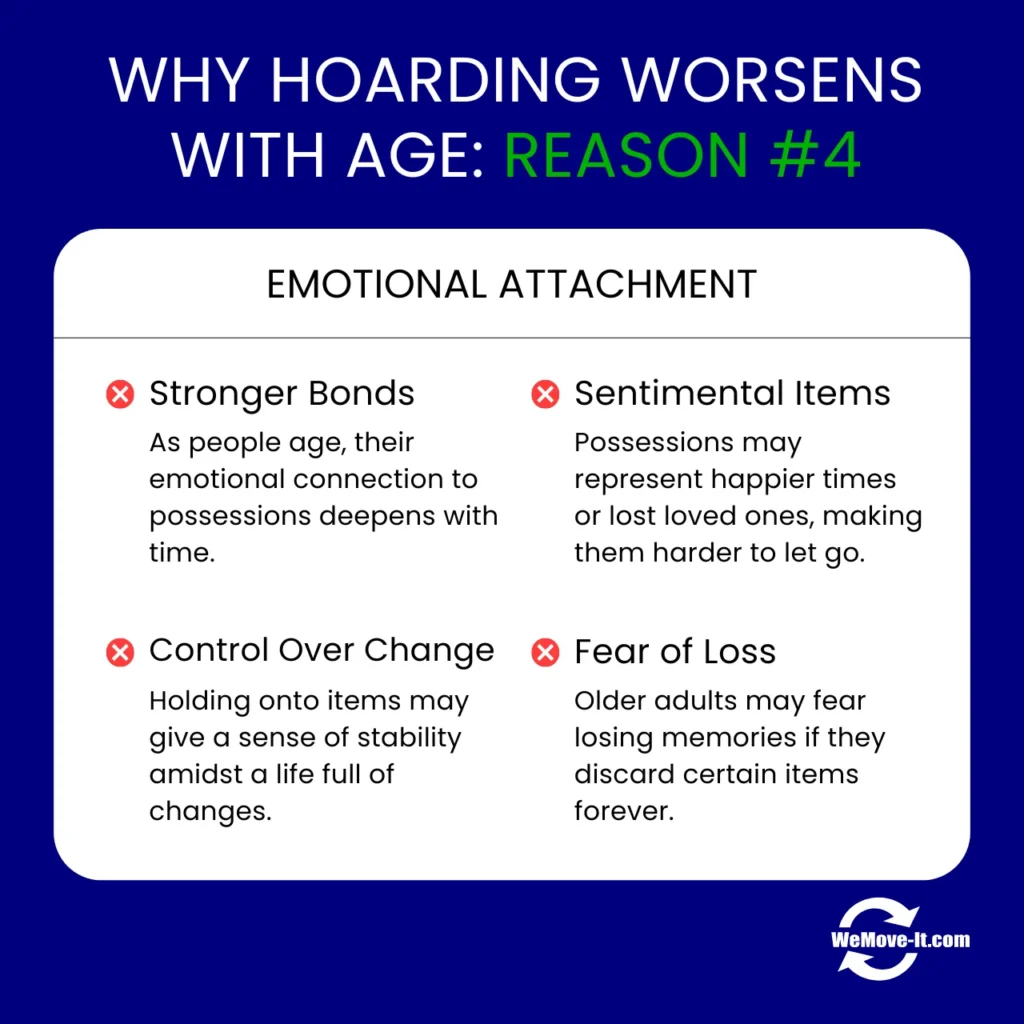
Emotional attachment to possessions is a hallmark of hoarding disorder, and this attachment often deepens with age. As people grow older, they may experience significant life events, such as the loss of loved ones, retirement, or changes in living situations. These events can lead to a stronger emotional attachment to possessions, as these items may be seen as reminders of happier times or as a way to maintain a sense of control in a changing world.
For some, the fear of losing memories associated with certain items becomes overwhelming, leading them to hold on to things even more tightly. This emotional attachment can make it increasingly difficult for older adults to part with their possessions, resulting in worsening hoarding behavior.
Social Isolation
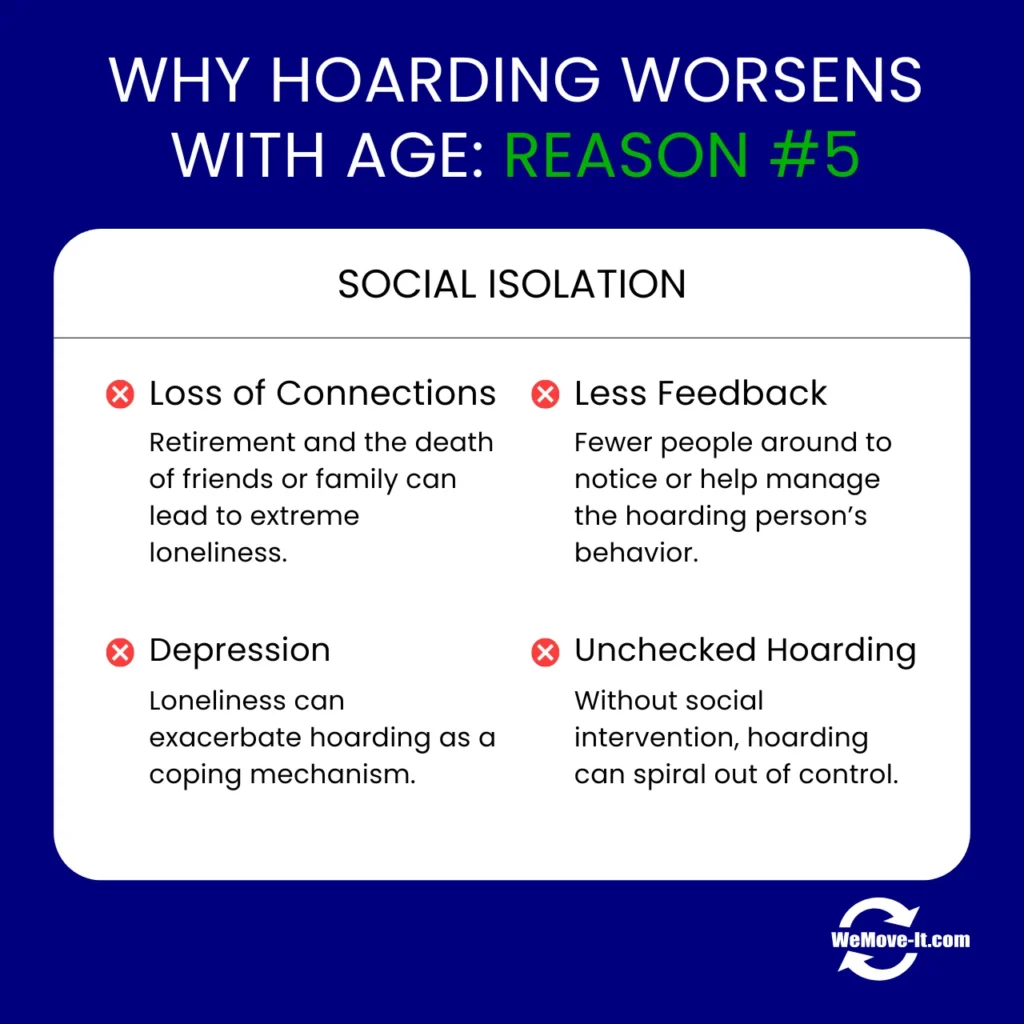
Social isolation is a common issue among older adults, and it can have a significant impact on hoarding behavior. As people age, they may lose social connections due to retirement, the death of friends or family members, or physical limitations that make it difficult to leave the home. This isolation can lead to loneliness and depression, both of which can exacerbate hoarding.
When people are isolated, they may also lack the external feedback that might otherwise encourage them to address their hoarding behavior. Without friends or family to intervene or offer support, hoarding can go unchecked and worsen over time.
Mental Health Issues
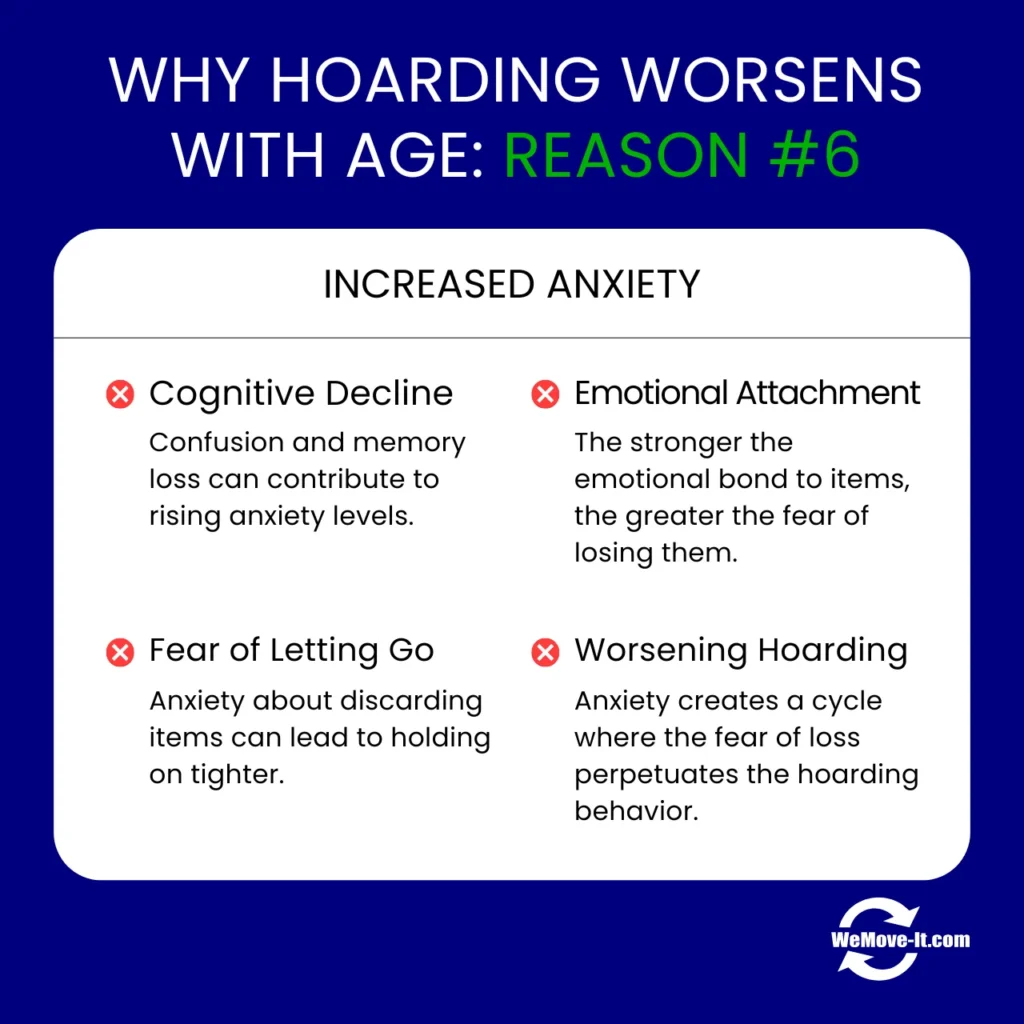
Mental health issues such as depression, anxiety, and obsessive-compulsive disorder (OCD) are closely linked to hoarding. These conditions can worsen with age, particularly if they are left untreated. Older adults may also experience new mental health challenges as they face the realities of aging, such as declining health, loss of independence, or the death of a spouse. These mental health challenges can intensify hoarding behaviours as a coping mechanism.
The Impact of Worsening Hoarding on Health and Safety

As hoarding behavior worsens with age, the impact on health and safety becomes more severe. Cluttered living spaces can pose major risks, including:
- Fire Hazards: Clutter can create fire hazards by blocking exits, overloading electrical outlets, and providing fuel for fires. The National Fire Protection Association (NFPA) reports that hoarding significantly increases the risk of fire-related injuries and deaths.
- Falls and Injuries: Moving through a home filled with clutter can lead to trips and falls, which are particularly dangerous for older adults. Falls are a leading cause of injury and death among seniors, and hoarding increases the likelihood of these accidents.
- Health Hazards: Accumulated items can attract pests, mold, and bacteria, leading to unsanitary conditions that can cause or exacerbate respiratory problems, infections, and other health issues. Hoarding can also make it difficult to maintain personal hygiene, further impacting health.
- Structural Damage: In extreme cases, the weight of accumulated items can cause structural damage to a home, leading to unsafe living conditions. This can include floors collapsing, ceilings caving in, or walls cracking.
- Social Consequences: Worsening hoarding can lead to social isolation as individuals become too embarrassed or overwhelmed to have visitors. This isolation can further deteriorate mental health and make it more difficult to seek help.
How to Help Someone with Hoarding as They Age
Helping someone with hoarding disorder, especially as they age, requires patience, compassion, and a non-judgmental approach. Here are some steps you can take:
- Start with a Conversation: Open a dialogue with the individual about your concerns. Be gentle and avoid criticizing or blaming them. Instead, express your concern for their health and safety and offer your support.
- Encourage Professional Help: Hoarding is a serious mental health condition that often requires professional intervention. Encourage the individual to seek help from a mental health professional who specializes in hoarding. Cognitive-behavioral therapy (CBT) has been shown to be effective in treating hoarding disorder.
- Offer Practical Support: If the individual is willing, offer to help with decluttering in small, manageable steps. Focus on one area at a time and celebrate small victories. Remember, the goal is not to completely clear out the home overnight but to make gradual progress.
- Be Patient: Change takes time, especially with hoarding disorder. Be patient and understanding, and recognize that setbacks are normal. Continue to offer your support and encouragement.
- Seek Professional Cleanup Services: In severe cases, professional cleanup services may be necessary to restore the home to a safe and livable condition. A company like WeMove-It.com specializes in hoarder cleanup and can handle the situation with compassion and expertise. Looking to tackle the job yourself? Then take a look at our guide on how to clean a hoarder’s house for some great tips to get you going.
Address Hoarding Now Before It Gets Worse
Hoarding is a challenging condition that often worsens with age, but it’s never too late to seek help. Whether you’re struggling with hoarding yourself or trying to help a loved one, addressing hoarding early on can help prevent it from becoming more severe as well as improve the quality of life for everyone involved.
If you or someone you know is dealing with hoarding, reaching out to professionals can be an important step toward restoring a safe and healthy living environment. At WeMove-It.com, we offer experienced and compassionate hoarder cleanup services tailored to meet your needs. Get in touch with us today to schedule a free estimate and learn how we can help you regain control of a living space and bring peace back into the home.
